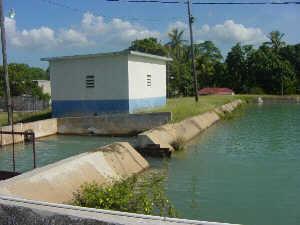Protecting Drinking Water Quality through Promotion of Water Safety Plans
Water Safety Plans (WSP) were introduced by the World Health Organization (WHO) in the 3rd edition of the Guidelines for Drinking Water Quality (2004), Exit as a health-based, risk assessment approach to managing drinking water quality that:
- Identifies and prioritizes potential threats to water quality at each step in the water supply chain for a specific drinking water system; and,
- Implements best practices to mitigate those threats and ensure drinking water quality.
EPA began promoting Water Safety Plans (WSPs) to help partner countries improve drinking water quality in Latin America and the Caribbean, Asia and, more recently, Africa.
Recent News
The International Water Association (IWA), in cooperation with EPA, provided a Water Safety Plan training to Ghana Water Company, Ltd and other stakeholders in Accra in April 2016. As part of the program, EPA lab experts provided presentations on how laboratory capacity fits into Water Safety Plan development, Quality Systems, and Traceability. This training supports EPA’s work to build laboratory capacity in West Africa.
- Explore more information on EPA’s WSP work in Sub-Saharan Africa.
- Download the training presentation from the Water Safety Portal. (19 pp, 1.4 M, About PDF) Exit
Initial Efforts
EPA’s WSP efforts began in Latin American and the Caribbean. In response to the devastation from Hurricane Mitch (October 1998), the US Environmental Protection Agency (EPA) began work addressing drinking water issues in Central America. The hurricane had caused severe damage to the region. The four components of EPA’s Hurricane Mitch activities were:
- laboratory capacity building;
- drinking water treatment plant optimization;
- source water protection; and
- safe drinking water program development.

An initial demonstration WSP was piloted in Spanish Town, Jamaica in 2006, in partnership with the US Centers for Disease Control (CDC) and the Pan American Health Organization (PAHO). Subsequently, other nations in Latin America and Central America including Brazil, Bolivia, Honduras, Costa Rica and Guyana all began developing WSPs, either on their own or with support from PAHO, CDC, and EPA.
Subsequent WSPs supported by EPA took place in India and are currently being implemented in Africa through a partnership with IWA.
Useful Links
- Case studies and related documents can be found on the Water Safety Portal hosted by WHO and the International Water Association.
- Water Safety Plan Manual with instructions on how to develop a water safety plan
- Water Safety Plan Network for Latin America and the Caribbean (WSP LAC/NET)
